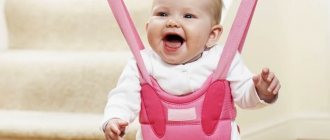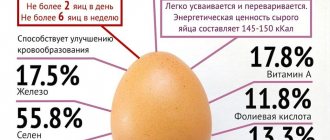Swimming is one of the most useful, early sports, which has virtually no contraindications. The section accepts children aged 3 years and older. Swimming for children can be both sporting and recreational.
Its benefits are due to the combination of physical activity and the healing properties of water. Little-known facts about the benefits of swimming for children.
What are the benefits of swimming for children?
Much has been said about the benefits of swimming for children, but in addition to well-known truths, such as harmonious physical development and strengthening the nervous system, this sport also has a number of positive qualities that parents need to know about, namely:
- Improvement of cognitive functions. Early exercise in water stimulates the areas of the brain responsible for cognitive functions. According to research results, children who participated in the pool from three to five years old are significantly ahead of their peers in reading, literacy and mathematics;
- Reducing the risk of accidents on the water. By exercising in the pool, your child will not encounter a water accident in the future. Here he will be taught how to behave correctly in extreme situations in order to get to the shore and not drown, because, as we know, the most common cause of drowning is panic;
- Developing independence and determination. Swimming, like any sport, makes children courageous, purposeful and independent. These qualities will allow them to achieve great success in the future, and this applies not only to sports, but also to their career and personal life. According to statistics, swimmers most often become successful businessmen and scientists.
In general, swimming can be called the most useful sport, especially for preschool children. Regular classes will help strengthen all body systems, which will have a positive effect on the child’s further education in primary school.
The benefits of swimming for a child
Everyone has heard about the benefits of swimming, but what specific benefits will a child receive from visiting such a section? Among the most obvious are:
- uniform development of all muscles of the body. To hold and move through the water, the child coordinates and uses all the muscles of the body, training and strengthening them. The shoulder girdle, arms, legs, and abs develop best;
- strengthening and relaxation of the musculoskeletal system. In water, the body is lighter than on land, all joints and the spine are relieved of compression load and rest. Swimming is recommended for children with slight deviations in posture and various diseases (consultation with a pediatrician is required first);
- fast growth. Reduced compression load on the joints and spine contributes to the rapid growth of skeletal bones;
- improved coordination. To keep the body on the water and swim, the child needs to coordinate body movements, which has a positive effect on the ability to control his body and feel it;
- the functioning of the pulmonary system improves. In order to swim, boys and girls need to learn to breathe correctly, take deep breaths and short exhalations. Constant training of “correct” breathing improves blood saturation with oxygen and helps improve the pulmonary system;
- strengthening the immune system, hardening the body. Water helps strengthen the body's resistance to temperature changes.
- emotional charge, feeling of satisfaction. If a child attending the swimming section gives his all during training, then at the end of the lesson he feels tired, but satisfied.
- removing negativity, reducing nervous tension, irritability. Exercising in water helps relax the nervous system; through active sports, boys and girls release accumulated negative energy and feel more confident.
You can teach a child to swim starting from 2 weeks of age, but most sections begin accepting those interested after 3 years.
The recommended age for starting a swimming class with a coach is 6-7 years old.
Amateur swimming sections provide classes 2-3 times a week for 1 hour. For children under 6 years old, one lesson in water takes about 20 minutes, the remaining time is spent practicing elements on land.
Aerobic exercise
It is less important for children to train the cardiovascular system than for adults, for whom it is an important part of preventing the risk of cardiovascular disease.
However, aerobic exercise is the development of endurance and general strengthening of the body , and this is very important for children.
Development of the lungs and chest
Swimming is very different from other sports in terms of breathing features: it is more difficult to inhale , since water presses on the chest, and it is even more difficult to exhale , since with the correct technique, the exhalation is done after immersing the face in the water.
Children begin to be taught the same thing from the very beginning of swimming lessons: kids learn to blow bubbles into the water with their nose and mouth; for older children, one of the first exercises is swimming with a board by using their legs, in which they, holding the board with their hands, raise their heads to inhale and then lower their face into the water, swimming as they exhale.
Such “difficulties” contribute to the fact that children exercising in the pool improve the development of their lungs and chest , which has a beneficial effect on both the overall development of the body and the prevention of respiratory diseases.
If a child does not have enough lung strength to inflate a balloon, give it to the pool))
Strengthening muscles and joints. Body growth
This point is especially relevant for children, which is where I started this article. Swimming is an opportunity to strengthen the muscles and joints of the back, shoulders, arms, chest, legs without any harmful stress on them.
At the same time, while swimming, the child stretches out ; with regular exercise, this can have a beneficial effect on his growth . In terms of growth, of course, genetics, nutrition and other factors are of paramount importance, but the general strengthening of the spine and joints is also important.
Swimming strengthens you both physically and mentally!
On the issue of losing excess weight
The already mentioned article about the benefits of swimming for adults also talks about losing excess weight. For children this is most often not relevant - that’s why I don’t put it in a separate paragraph.
However, if a child is overweight, then this is another very significant reason to start going to the pool. Due to constant physical activity in water, you can also lose weight without harm to the body.
Hardening and immunity
The water in children's pools should not be as cold as in adults (I wrote more about what the temperature should be here).
However, for a child's body, being in water with a temperature of 29-32 degrees Celsius is still a decent cooling .
Such cooling, if you regularly attend classes, is a good hardening of the body and helps strengthen the immune system.
6.Feeling of water
The peculiarity of children is that it is in childhood that motor reflexes , the body’s subconscious memory for performing certain movements, are formed.
If a child learns to swim incorrectly in childhood, relearning it as an adult will be extremely difficult, and most likely impossible one hundred percent.
Swimmers have such a concept as “ sense of water ” - when a person does not suffer while swimming in order to overcome the resistance of the water, but easily glides along it, feels the correct support during strokes, and intuitively takes the correct body position.
This very “sense of water” is best instilled and embedded in the subconscious in childhood , through regular classes with a qualified, competent trainer.
Types of swimming
Competitive swimming includes several disciplines. At first, children engage in general swimming, but later they need to choose a direction for further development.
The sections teach the following disciplines:
- Crawl. This is the fastest type of movement in water. Front crawl is also called free style. The crawl also happens on the back. This discipline is considered one of the most dynamic and spectacular in competitions. To practice crawling, you need such data as endurance, physical strength and reaction speed;
- Breaststroke. This type is the most silent, which is why it was used during hostilities. Breaststroke swimmers must have strong arms, because the arms are the main tool for moving through the water in this discipline. The main difficulty of breaststroke is considered to be mastering breathing, because you cannot swim with your head raised above the water;
- Butterfly. Most often, butterfly is perceived as a type of breaststroke, but this is a mistaken opinion. This discipline is characterized by high speeds and serious physical exertion. This type takes on guys with good physical characteristics and impressive muscle mass;
- Synchronized swimming. This discipline is significantly different from others, because it is a dance in water, which requires serious endurance and endurance from athletes. This discipline is considered a women's sport. Girls should have a sense of rhythm and flexibility. Girls from the gymnastics section often come here.
There are other types of swimming, but they are not included in the competition program and are considered amateur. These include frog, Georgian and doggy styles.
What to do if your child refuses to go swimming
The benefits of swimming for children are undeniable, but often enough when faced with difficulties during training, children begin to refuse to attend the section. In this situation, parents need to assess the situation according to several criteria:
Ask your child about the reasons for not wanting to attend the selected section.
Depending on the child’s answer, there are several options:
- I don't like the coach and his teaching style. In such a situation, you need to clarify what exactly the child does not like about the coach. Perhaps the section leader demands too much from the child or does not explain it clearly enough. In this situation, you can go up and talk directly with the coach about his view of the current situation, if after that the situation does not change, you can find another specialist.
- Difficulty performing the proposed load. Talk to the trainer, ask that the training program be revised for the time being for your baby.
- Misunderstanding with the guys in the group. In children's groups, sometimes there are clashes and ridicule; if your baby refuses to go because of difficulties in communicating with other children, talk to the coach so that he can use pedagogical technologies and talk with the parents of other children.
In any case, before refusing to visit the pool, you need to talk with the coach, find out his opinion about your child’s abilities and capabilities, and hear his professional opinion about the current situation. Children, especially younger schoolchildren, cannot always clearly explain the reason for their reluctance to attend the section. If you do not find the reason for this reluctance, then there is a possibility that the same problems will appear in another circle or section. The first step to regaining the desire to take extra classes is to find the reason for the rejection.
Offer to try another sport
Swimming is a good form of exercise, but not all children enjoy going to the pool. Each baby is individual, and perhaps another sport will be more desirable for your baby. This option is suitable for you if the child, being on good terms with the coach and children, performs all the proposed loads easily, does not feel the desire to go to training, and enthusiastically talks about other activities.
At what age should a child start swimming?
For health purposes, it is recommended to send children swimming in infancy. In such sections, mothers visit the pool with their children; children from 3 years old are recruited for classes. At such a young age, group classes are also recreational in nature and prepare the baby for a future sports career.
They begin to study professionally at the age of 7. At this time, schoolchildren have already decided on the main direction and begin to prepare for competitions and performances. When registering a young athlete in a professional section, it is necessary to take out insurance for the child. The cost of insurance depends on the insurance period and completeness of coverage.
pros
Swimming is so beneficial for physical and mental health that it is considered both a sport, a leisure activity, and a therapeutic technique. Let's look at its most basic advantages.
- Strengthening the immune system. Swimming is one of the most effective types of hardening. With constant exercise in the pool, thermoregulation mechanisms are improved, and the body learns to quickly adapt to changes in the external environment. You can forget about your child’s seasonal colds.
- Physical development. In swimming, almost all muscle groups are involved, arms, legs, and back work. Such a uniform load forms a harmonious and proportional figure, improves posture and increases endurance.
- Prevention of diseases. Swimming prevents curvature of the spine, the development of flat feet and the development of excess weight in the child.
- Relieving stress. Swimming in water is always a positive emotion. If your child is restless, very active or aggressive, swimming will allow him to release excess energy and provide a regular calming effect.
- Benefits for the body. Swimming improves the functioning of the respiratory, cardiovascular, circulatory and nervous systems, which in turn comprehensively strengthens the health of the little athlete.
- Character formation. Training in the pool, as in any sports section, requires discipline. By practicing swimming professionally, a child will learn to be attentive, responsible and hardworking, understand the tasks assigned to him, lose and win.
Swimming lessons in the pool for children
Swimming classes in the pool can be divided into recreational and sports. Even if you have enrolled your child in the section, for the first year he will engage in recreational swimming. This is necessary to build muscle mass, familiarize yourself with the technique and adapt the body to frequent exposure to water.
When exercising in a swimming pool, the following side effects may occur due to the high chlorine content:
- Skin rashes and peeling;
- Inflammatory diseases of the respiratory tract.
If after exercising in the pool you notice these manifestations in your child, consult a doctor; you may need to change the pool or choose a different sport for him.
Swimming for babies
Children have innate reflexes to swimming. An infant is characterized by kicking movements that resemble the brace style. At this age, the baby is not at all afraid of water and can easily hold his breath. Therefore, if your baby enjoys splashing around in the bath and has no contraindications, you can safely go to the pool.
In the process of swimming, children get rid of increased and excessive muscle tone, which is typical for infants. In water, muscles relax, straighten and strengthen. With a competent approach to exercise, swimming will only bring benefits to the baby. This is the best option for strengthening and maintaining health.
The main approach in this matter is gradualism. We gradually increase the depth, the area of space with water, and the duration of swimming. It is important to stop exercising if necessary. This is done if the child is very overexcited, there is a short-term cessation of breathing or skin problems.
Methods of teaching children to swim
The teaching method depends on the purpose of the lesson. If this is a health section, classes are held 2-3 times a week. Children learn how to float on the water, perform various exercises and learn techniques.
If the goal of the classes is big-time sports, the teaching methodology is aimed not only at lessons in the pool, but also at strengthening the muscle corset and increasing endurance. In this case, training takes place every day. Classes in the pool are replaced by training in the gym and on the treadmill, and they take a dry swimming course.
Which pool should I go to?
For children who do not yet know how to swim or do it poorly, choose a special children's bowl. It should be deep to the child’s chest, where he can stand calmly and confidently. In addition, the length of such a pool should not exceed seven meters.
Choose groups that include children of approximately the same age and skill level. The smaller the group, the better. Then the coach will pay more attention to each child. When choosing a pool, pay attention to the degree and type of water purification.
Experts do not recommend choosing modern disinfection using ultraviolet irradiation. This method does not kill dangerous microorganisms completely. In addition, you can find cleaning using silver and copper. This option is only suitable for compact pools. But in this case, cleaning is absolutely safe and does not contain chemicals.
Today, the use of ozone and chlorine is considered safe, where ozonation occurs first, followed by chlorination. At the same time, the dose of chlorine is significantly reduced compared to already outdated cleaning methods, when chlorine alone was used.
Swimming accessories
If you decide to send your baby swimming at an early age, you need to purchase accessories that will keep your baby as safe as possible. Without these accessories, your child will not be allowed to attend classes.
You will need to buy:
- Hats. You will need to buy a silicone swimming cap and a cotton cap, which you put on after a shower until your hair is completely dry;
- Glasses. The color of glasses should be chosen according to the lighting. In open water and in pools with strong lighting, dark lenses are suitable, blue and gray are for reducing brightness, orange and brown are for dim pools;
- Earplugs. Pool earplugs are reusable and disposable. Until the baby learns to care for her accessories, it is better to buy disposable pads;
- Oversleeves. Armbands for children are selected according to size. It is important to choose an accessory so that it does not come off your forearm and does not pinch your hand;
- Swimming belt. The smallest swimmers need a belt. This accessory is used only at the learning stage to stay afloat. The belt is selected according to the baby’s weight;
- Swimsuit or swimming trunks (2 pcs.). Girls need to buy one-piece swimsuits, and boys should buy swimming trunks in the form of shorts.
A complete set of accessories costs an average of 3,000 rubles. Also make sure to buy two towels, a washcloth and soap, pool shoes and a comfortable bag. Before enrolling in the section, you will need to undergo a medical examination to exclude contraindications to classes.
Equipment required for classes
For the first lessons in the swimming section you need to prepare:
- swimming trunks;
- swimming cap;
- rubber slippers or other shoes for walking from the locker room to the pool;
- Goggles;
- washcloth and soap;
- towel;
- cotton hat She gets dressed after a post-workout shower until her hair is completely dry;
Depending on the number of children in the group, sleeves, a collar or a belt may be needed. The need to purchase these parts must be clarified with the trainer.
Medical contraindications
Swimming as a sport has a number of contraindications for which exercise in the pool is strictly prohibited, these include:
- Any skin diseases, including dermatitis, scabies, eczema, psoriasis;
- Diseases and injuries of the spine (except for spinal curvature);
- Congenital and acquired heart disease;
- Chronic and acute viral diseases;
- Epilepsy and other disorders of the nervous system with the manifestation of convulsive syndrome.
Also contraindications include a panicky fear of water. If your baby is terribly afraid of water, there is no need to force him to study, this will not solve the problem and will only worsen the psychological problem.
What parents need to know
It was already noted above that children have special reflexes that allow them to stay on the water. It will be useful for parents who decide to develop such natural abilities to know how to teach their newborn to swim. This is not difficult to do by following simple recommendations.
- Age. Swimming of newborns in the bath can be practiced when they reach 3–4 weeks. It is by this time that the umbilical wound heals, and the child begins to adapt to the environment.
- Bath. Your child's first swimming lessons should be given in the same bathtub in which you bathed him before. A change of environment will cause a feeling of fear in the child and will not give the desired result. You should also be responsible about keeping the bath clean. Before bathing, it should be washed with laundry soap and treated with soda 1-2 times a week (disinfectants are not suitable, as they can cause allergic reactions in the newborn).
Thus, the first lessons should take place in a familiar environment - in the bathtub; as the baby develops certain skills, he can be transferred to a large bathtub, and then to the pool.
- Water. Initially, it should be no lower than 35 and no higher than 37 degrees. The degree can be lowered as the newborn adapts, thereby hardening it. The lowest possible temperature is 32 degrees.
And also during training, you cannot stop monitoring the child’s behavior. For example:
- A baby's continuous crying while immersed in water may indicate that the water temperature is either too hot or too cold.
- If after a few seconds the baby calms down and stops crying, you have selected the water at the optimal temperature.
- Excessive passivity of the baby during bathing indicates that the water is too warm. She has a soothing effect on him.
Many young parents worry about the water cooling down while swimming. There is no need to worry, because this is one of the goals of infant swimming at home - to strengthen the child.
How much do classes cost?
Compared to other sports, swimming does not require large financial investments. The main cost item is classes with a coach, but they can also be free if you send your child to a sports school or secondary school.
As a rule, “professional” enrollment starts from 7 years old, so it makes sense to take your child to a regular swimming pool before going to a sports school. It may also be free. The cost of one paid lesson with a trainer starts from 500 rubles, a subscription for 8 lessons - from 2000 rubles.
The next item is equipment. You will need to buy:
- one-piece swimsuit or swimming trunks - from 400 rubles;
- hat - from 200 rubles;
- swimming goggles - from 500 rubles;
- shoes for the pool - from 150 rubles;
- towel - from 200 rubles.











